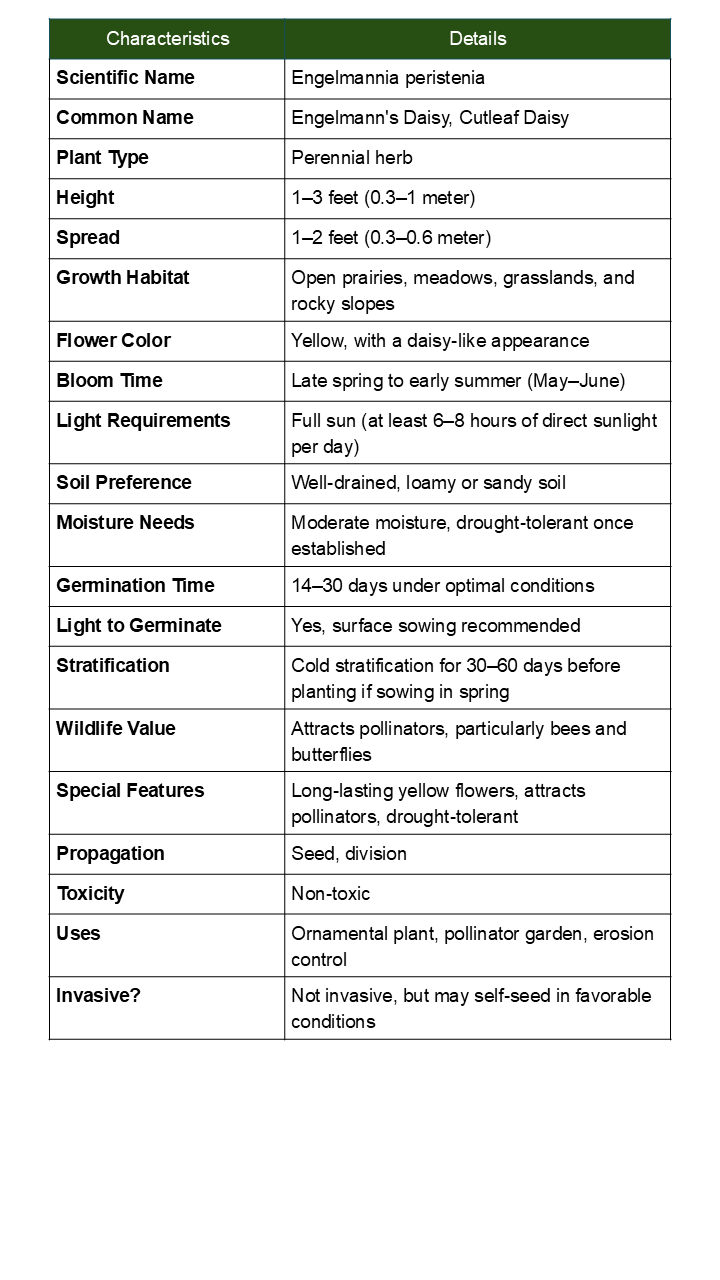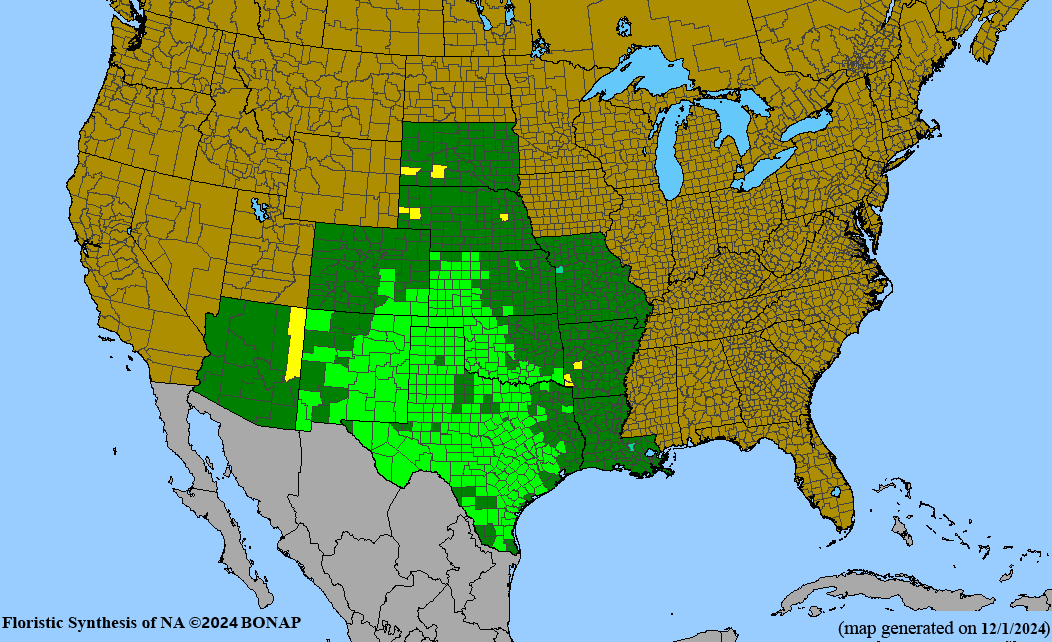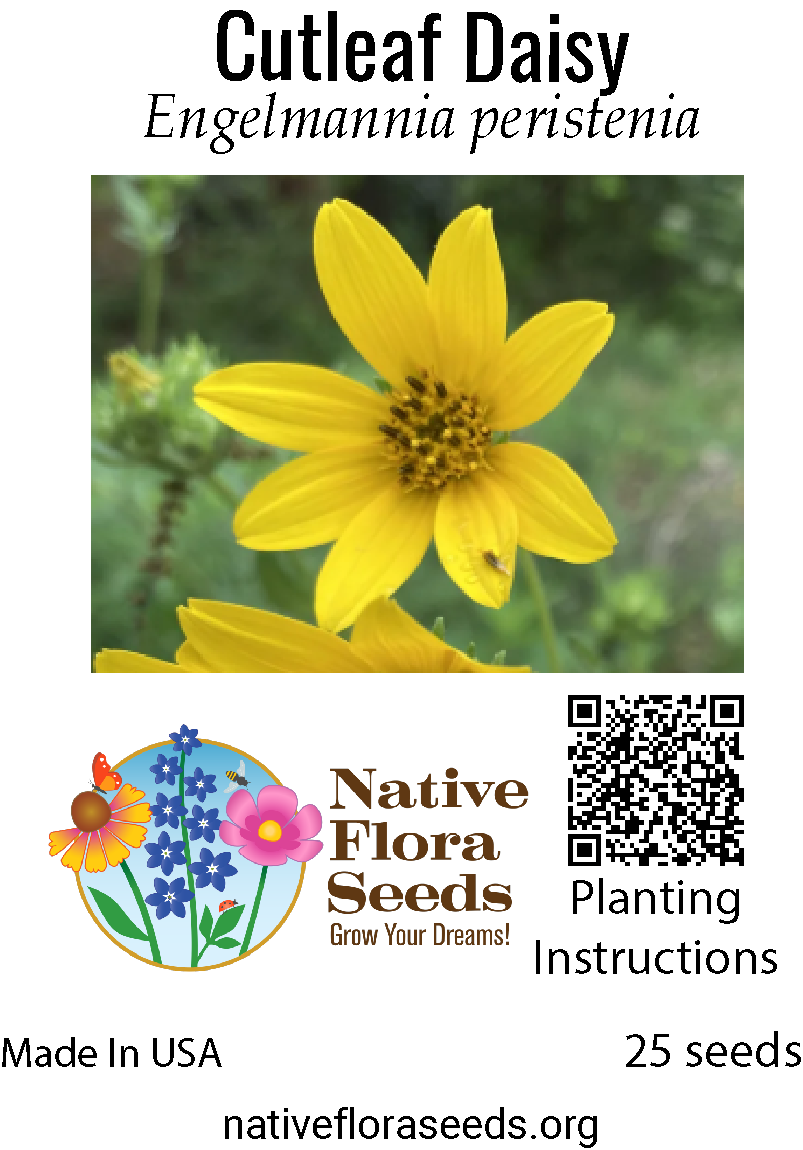Cutleaf Daisy Seeds - Native Engelmann Daisy Wildflower
Regular price$4.00
/
Tax included.
No reviews
Transform Your Garden with Native Cutleaf Daisy
Bring the beauty of native American wildflowers to your landscape with our premium Cutleaf Daisy (Engelmann Daisy) seeds. This stunning perennial wildflower is a true gem for any garden enthusiast.
Why Choose Cutleaf Daisy?
- Drought-Tolerant Excellence: Thrives in challenging conditions with minimal water requirements
- Pollinator Paradise: Attracts butterflies, bees, and beneficial insects to your garden
- Long Blooming Season: Enjoy vibrant yellow flowers from spring through summer
- Low Maintenance: Perfect for busy gardeners who want maximum beauty with minimal effort
- Native Heritage: Supports local ecosystems and wildlife
Plant Specifications
- Height: Up to 3 feet tall
- Bloom Time: Spring to Summer
- Flower Color: Bright Yellow
- Hardiness: Perennial in zones 4-9
- Soil: Well-draining, adaptable to various soil types
Experience the joy of growing authentic native wildflowers that connect you to America's natural heritage while creating a sustainable, beautiful landscape.
FREE SHIPPING WITHIN USA



